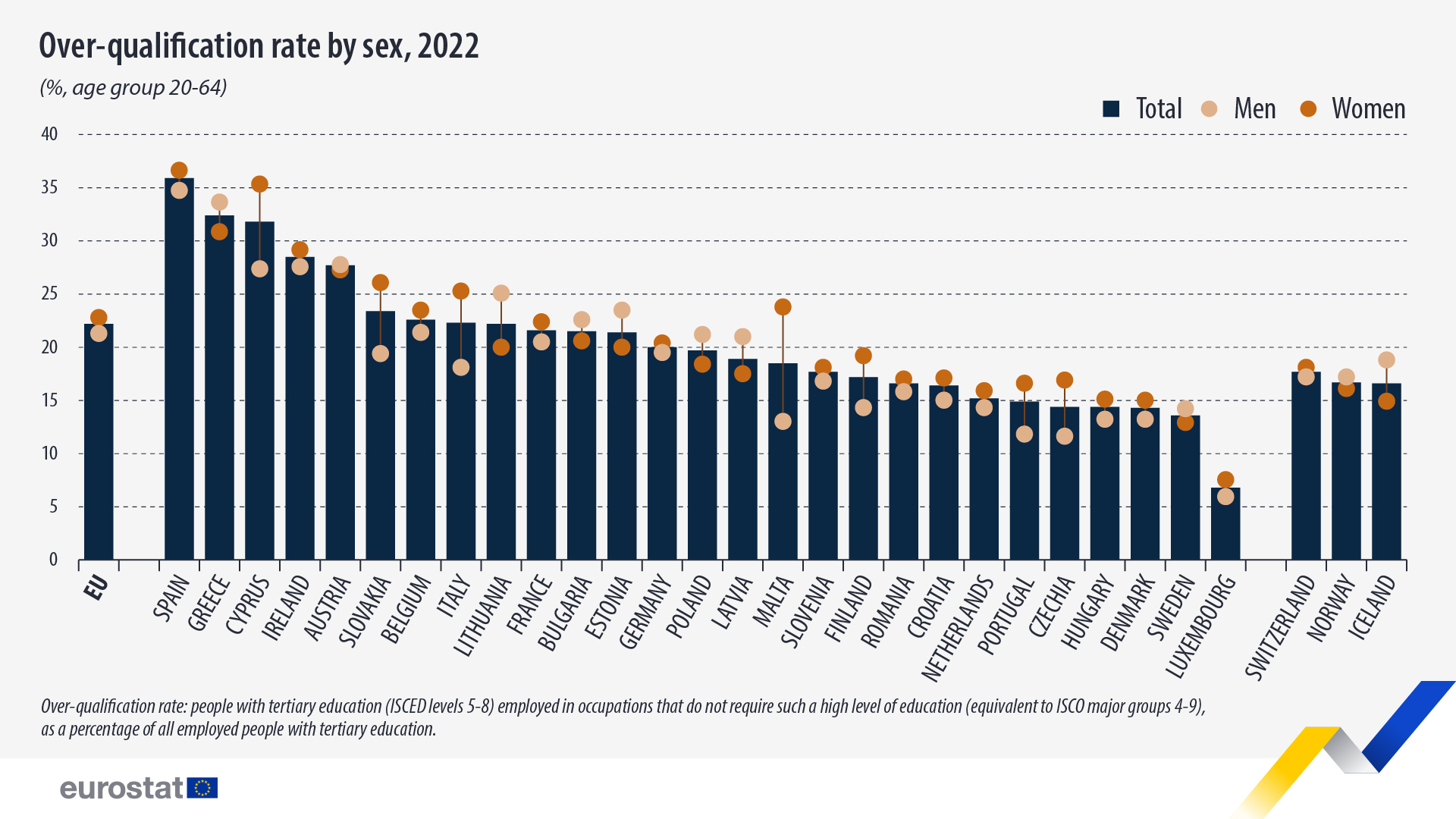EU's employment rate peaks at 75% in 2022

In 2022, 75% (193.5 million) of the EU's 20-64-year-olds were employed, the highest share recorded since the start of the time series in 2009. The employment rate dropped to 72% in 2020 due to the COVID-19 pandemic, but rebounded to 73% in 2021 and further increased by 2 percentage points (pp) in 2022.
This information comes from the data on the labour force published recently by Eurostat. This article presents a handful of findings from the more detailed Statistics Explained article.
Source datasets: lfsi_emp_a and lfsa_ergan
Among the EU countries, 11 had employment rates above 78% (one of the three targets set in the 2030 action plan of the European Pillar of Social Rights), with the Netherlands (83%), Sweden, and Estonia (both 82%) having the highest rates. The lowest rates were recorded in Italy (65%), Greece (66%), and Romania (69%).
Women more over-qualified than men
In 2022, the EU over-qualification rate was 22%, with 21% for men and 23% for women. Over-qualification is when people with tertiary education (ISCED levels 5-8) are employed in occupations that do not require such a high level of education (equivalent to ISCO major groups 4-9). Since 2023 is the European Year of Skills, these statistics might help to inform policymakers how people in the EU fare in terms of application of their qualifications.
Source dataset: lfsa_eoqgan
Among the EU countries, the over-qualification rate was highest in Spain (36%), followed by Greece and Cyprus (each 32%). Meanwhile, Luxembourg (7%), Sweden, Denmark, Hungary, and Czechia (each 14%) recorded the lowest rates.
In 19 of the 27 EU countries, women had higher over-qualification rates than men, with the largest differences recorded in Malta (+11 pp), Cyprus (+8 pp), Italy, and Slovakia (both +7 pp). However, in eight EU countries, men had higher over-qualification rates, with the biggest differences recorded in Baltic countries: Lithuania (+5 pp), Estonia, and Latvia (each +4 pp).
For more information
- Statistics Explained article on employment - annual statistics
- Thematic section on employment and unemployment (LFS)
- Database on employment and unemployment (LFS)
- Statistics 4 Beginners on the labour market
Methodological notes:
- Over-qualification rate: people with tertiary education (ISCED levels 5-8) employed in occupations that do not require such a high level of education (equivalent to ISCO major groups 4-9), as a percentage of all employed people with tertiary education. This definition is based on ILO's International Standard Classification of Occupations: Structure, group definitions and correspondence tables.
If you have any queries, please visit our contact us page.

